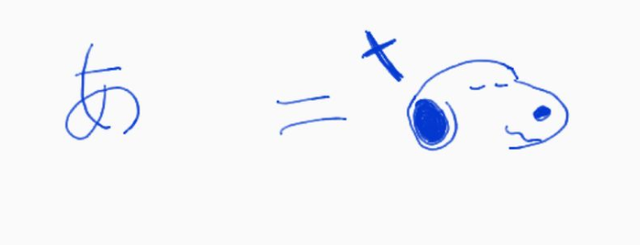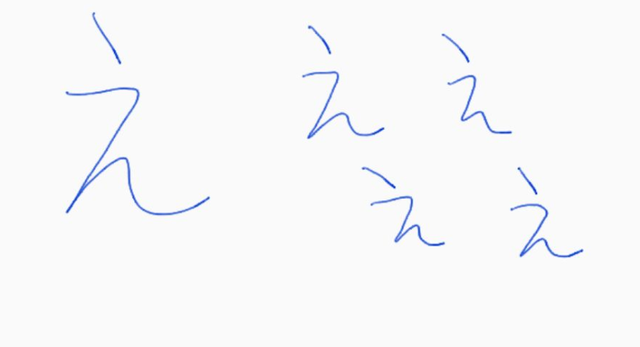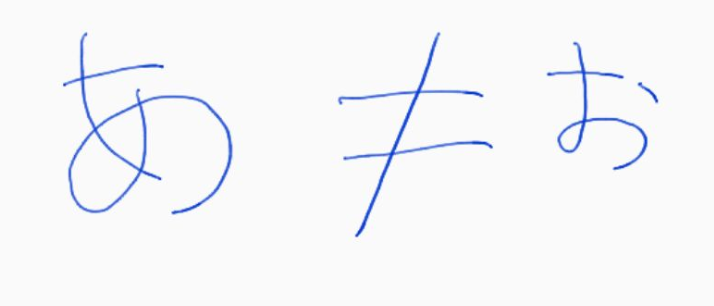002 Learning Japanese - Hiragana Practice
Hiragana Practice
Continuing from yesterday, my goal is to learn the first two rows from the Hiragana chart. It doesn't matter what order I write them in, as long as I write all of them, but since I'll frequently practice in an ad-hoc fashion without my study materials at hand, I need a way to enumerate all of the characters, even if I don't remember how to write them. That way, when I'm practicing without my study materials, I'll know if I have, indeed, covered all of them, or attempted to as I wont know for sure that I have them correct.
So, for the top row, I just remember that it's "a i u e o", which sounds like...
| letter | sound |
|---|---|
| a | ah as in say ah |
| i | ee as in eep |
| u | oo as in poop |
| e | e as in heck |
| o | oh as in okay |
I know I said I wasn't going to explain the sounds in the previous post but the completionist in me wont let me skip it.
I'd like to apologize to anyone attempting to use my notes to also learn. They're pretty much the Spanish vowel pronunciations. The sound hints I put in the table all make sense to me because of my particular 'merican English accent. You'll want to use youtube or some other resource to find pronunciations. Or maybe use the audio CDs that come with the Genki books?
Anyway, I don't seem to need a mnemonic for the vowel order or a reminder of what they sound like on their own. But for the left side of the chart, it's "k s t n h m y r w n" for which I do need a mnemonic. So I'm going with "kiss then hug my really white nose". Get it? Kiss TheN Hug MY Really White Nose... anyone else think of anything better? I only had to repeat it three times and it seems to have stuck. We'll see if I still remember it tomorrow.
So, the vowels, WTF, these don't look like anything to me, yet. After some googling, the Hiragana characters are weirdly based on some Chinese Characters. This is sort of interesting, but they don't look to me that much like their Chinese counterparts and they don't sound like what they sound like in the only dialect of Chinese (Mandarin) that I speak.

Edit: it's from 安 I was thinking 女 but it's 安. あ looks a lot like 安 but maybe it's partly because I've been practicing it and have a better feel for it?
I guess I kind of see that. But that doesn't make a very good mnemonic. I think it also kind of looks like someone stabbed Snoopy in the ear with a cross. You don't see it? I don't think I can get an image of Snoopy because of copyright, and I certainly can't draw one, but here's a sort of attempt...

The poor bastard doesn't see it, but he's about to get jabbed in the ear by that cross looking thing, and when he does, he will, invariably, shout "Aah!" which is the sound that the character makes. See it now? Snoopy, getting stabbed in the ear, makes an "ah" sound as he screams in pain. It's a totally straightforward mnemonic.
The next one, い is a bit like two vertical sticks with a slight hook on one, I'll remember that it's two lines because the sound 'i' sounds like the word for two in Cantonese. I learned to count in Cantonese long ago and it just stuck with me. Remembering that they're vertical might be an issue, so I'll instead think of it as the letter I, but the top half was snapped off, perhaps in some violent wind storm.
The next, u, looks like う and it's a really simple looking character, but it doesn't look like anything to me...

Maybe it's a letter U that was in a horrible and tragic accident, snapped off one side of it and landed on the ground, on it's side, possibly bleeding out whatever fluid keeps letters alive. Oh, the poor bastard -- and there's the sound. Yeah, that works.
Notice the heavy embellishment here coupled with visceral imagery? Much like poor Snoopy, above? This is totally a cheap way to form a stronger impression of something you're trying to cram into short term memory. It helps you hold it long enough to transition to long term memory. The actual story doesn't matter, as long as it creates a connection to the elements you want to remember. The story may weaken and fade over time, but it only needs to last long enough that I can practice writing the character enough that I remember the character. Then, when the story falls away, it wont matter because I'll already remember the character.
The next character, e, え, I don't know what the heck this thing looks like.

I don't know what this one looks like, but it's really easy to write. So easy, that I'm able to write it pretty consistently without really needing a mnemonic, so I'm not going to make one up right now. If it turns out I need one later, I'll revisit it. Anyone else have anything for this one?
Next character, o, お once again, this doesn't look like much to me. When I look at the tiny font for it, it looks a lot like あ.

The differences are a little more pronounced when I write it large. And the way it is drawn requires much less pen lifting so it feels a lot different to write than a. The Snoopy ear part of it is much less pronounced than with a, and it's really more like the T part of it just has a loop at the bottom and then I need to go back up to make that little stroke. No mnemonic is forth coming with this one, but I feel like focusing on the idea that it has a similar visual appearance to a, but a vastly different feel when writing it might be enough. If not, I'll revisit it.
Well, given how different these are, I'm not going to practice ka, ki, ku, ke, ko yet. I'm just going to practice the vowels for a bit today, I also wont be continuing on to the real lesson content from the book yet, either.
Character Practice
Armed with my handy mnemonic I'll be able to write out a chart of the first two rows. This seems silly now, but later when I'm doing three or four rows the importance of being able to address each cell of the table will be more obvious. Mainly I'll know which characters I'm missing when I then try to reproduce them from memory. I'll practice each vowel in isolation a few times, then I'll practice the k row a few times, each character in isolation. After that I'll start writing out combinations of V-K-V and K-V-K in romaji and then write in next to that the character.
For example, I'll write the following
a i u e o
ka ki ku ke ko
a i u e o
ka ki ku ke ko
Then I'l start making up nonsense three syllable words:
a-ka-a a-ki-a a-ku-a a-ke-a a-ko-a
i-ka-i i-ki-i i-ku-i i-ke-i i-ko-i
u-ka-u u-ki-u u-ku-u u-ke-u u-ko-u
e-ka-e e-ki-e e-ku-e e-ke-e e-ko-e
o-ka-o o-ki-o o-ku-o o-ke-o o-ko-o
And then some more:
ka-a-ka ka-i-ka ka-u-ka ka-e-ka ka-o-ka
ki-a-ki ki-i-ki ki-u-ki ki-e-ki ki-o-ki
ku-a-ku ku-i-ku ku-u-ku ku-e-ku ku-o-ku
ke-a-ke ke-i-ke ke-u-ke ke-e-ke ke-o-ke
ko-a-ko ko-i-ko ko-u-ko ko-e-ko ko-o-ko
Once I'm comfortable with vowels I'll switch to doing combinations with lower rows (k through second n) with each other.
Maybe my computer science background is showing, but recall how I wanted a mnemonic for the order of the row and column? It was so I could enumerate the entire Kana table (even if I can't necessary remember what the symbols are) and do combinations like this. Granted, this is horribly monotonous, but I'll only do it in 1-2 minute spurts while I'm doing other things. Like if I'm compiling, I'll pick up a pencil and continue from where I left off.
Feedback
I'm making these notes as I read the text book. If you spot any mistakes, please leave a comment. Even if the seven day window for editing has closed.
References:
- Genki: An Integrated Course in Elementary Japanese I, Second Edition, 2011.
- Obligatory XKCD Reference: compiling
Previous Post(s) in the Series:
You don't need to be such a perfectionist. You can breeze through hiragana in the time it would take to write this article three times. Especially if you speak Chinese! Don't waste your time learning anything out of context. Learn words as you learn hiragana. You can start with Japanese words you know like sushi, sake, wasabi, samurai. And if you can read Chinese you can use some words that you already know the characters for (some will be a little different if you learned simplified, but very similar).
Try these
女 おんな
男 おとこ
車 くるま
人 ひと
猫 ねこ
Words like that.
Or you could start with some basic Japanese sentence structure and learn the hiragana needed.
私は人です。 わたしはひとです I am a person Watashi ha hito desu.
You can study 8 hiragana together and simultaneously practice vocabulary and grammar. Change the word 人 to any word you come across, just for fun. You can quickly learn to say "I am not a bird".
Come to our chat and I can help you!